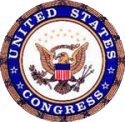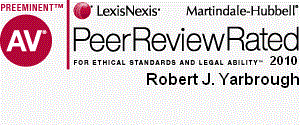Newsletter Issue 31 - September 2011
In this issue:
Patent reform signed into law
America Invents top ten list
Crucial information for inventors
PTO restarts 'fast track' patent review
Descriptive Trademarks: Apple loses one
Patent Reform Signed into Law
 On
September 16, 2011 President Obama signed the
'America Invents Act' into law. More than five years in the
making, the Act will have profound consequences for inventors, for
companies whose employees create inventions and for persons accused
of patent infringement. Over the next several newsletters, we will
bring you up to speed and explain how to protect yourself under the
new law. This month, we start with 'ten things you should know about
the America Invents Act' and provide 'crucial information for
inventors' about when an inventor or creative company should file
patent applications under the Act.
On
September 16, 2011 President Obama signed the
'America Invents Act' into law. More than five years in the
making, the Act will have profound consequences for inventors, for
companies whose employees create inventions and for persons accused
of patent infringement. Over the next several newsletters, we will
bring you up to speed and explain how to protect yourself under the
new law. This month, we start with 'ten things you should know about
the America Invents Act' and provide 'crucial information for
inventors' about when an inventor or creative company should file
patent applications under the Act.
Robert Yarbrough
America Invents Top Ten List
What should you know about the 'America Invents
Act?'
1. Rights to a patent will be determined by who filed first, not who
first conceived the invention. To preserve patent rights inventors
should consider filing one or more provisional patent applications
very early.
2. Marking products with an expired patent is no longer a violation
of the statute. Marking products not covered by a patent is still a
violation, but only an injured competitor or the federal government
can now bring suit.
3. It will be difficult for plaintiffs to sue multiple defendants in
a single lawsuit. On the other hand, it will also be difficult for
defendants to coordinate joint defenses.
4. Failure to disclose an invention's best mode will no longer
invalidate the patent.
5. Failure to obtain an infringement opinion of counsel cannot be
used to prove willful infringement or an intent to induce
infringement.
6. Third parties may challenge the validity of a patent in a Patent
Office proceeding on any grounds.
7. The burden to prove invalidity in a Patent Office proceeding is
by a preponderance of the evidence, rather than the higher burden
used in courts.
8. No more "tax strategy" patents will be granted.
9. No patents will be granted on claims encompassing human organisms
(but the Patent Office has long had this rule anyway.)
10. All patent fees will increase 15% immediately.
Lawrence Husick
Crucial Information for Inventors
The America Invents Act at section 102 changes the way that inventors and companies that own inventions do business and will radically change when inventors and companies that own inventions apply for patents. In one of the most important developments for inventors and invention owners, ALL U.S. PATENT RIGHTS IMMEDIATELY TERMINATE if any of the following events occurs on or after March 17, 2013, unless the inventor has filed a patent application:
1. the invention is on sale;
2. the invention is in public use;
3. the invention is described in a printed publication; or
4. the invention is otherwise available to the public.
This change in the law reverses what U.S. inventors have been
accustomed to for generations. Under the prior law, the inventor
could file a patent application up to one year after the date of a
sale or offer for sale, public use or disclosure of the invention in
a printed publication. This one-year 'grace period' will no longer
exist for sales or offers for sale or for public use. A new, limited
one-year grace period exists for public disclosures by the owner of
the invention, but not for sales or public use. The fly in the
ointment is that any such public disclosure immediately terminates
the inventor's foreign patent rights.
In short, the inventor or invention-owning company that wishes to
protect its U.S. and foreign patent rights should KEEP THE INVENTION
SECRET PRIOR TO FILING A PATENT APPLICATION. Remember that this part
of the new law goes into effect March 17, 2013.
This is all a bit complicated, so consider the following examples:
Example 1: On March 17, 2013, the day the new
requirements go into effect, the Alpha Company opens a booth at a
vending industry trade show. Alpha Company has invented a new and
novel vending machine, which it brings to the trade show. Alpha
Company has not yet filed a patent application to protect the new
vending machine. The new and novel aspects of the machine are not
apparent from looking at Alpha's display and Alpha does not reveal
how to make and use the invention.
a. An Alpha representative offers to sell the new vending machine to
a customer at the trade show. The machine is 'on sale' and Alpha
Company immediately forfeits its U.S. patent rights, even though the
offer for sale did not disclose the invention. The vending machine
still may be patented in Europe, Asia and the rest of the world,
provided Alpha does not run afoul of some other prohibition. The
rest of the world does not care about sales or offers for sale.
b. The Alpha representative demonstrates the machine to a customer
by putting a coin in the machine and dispensing a piece of candy.
This is a 'public use' of the invention. Alpha Company immediately
forfeits its U.S. patent rights, even though the public use did not
disclose the invention. The vending machine still may be patented in
the rest of the world, because the rest of the world does not care
about public use.
Example 2: At the same trade show, Beta Company brings its own new vending machine. Beta Company also has not filed a patent application for the new machine. The machine is not yet operational and Beta is not ready to take orders for the machine, so Beta does not sell or publicly use the machine.
a. Beta produces a brochure that discloses how to make and use the
invention. The brochure is on Beta's table at the trade show and
available to the public. This is a 'printed publication,' and
ordinarily such a printed publication immediately terminates U.S.
patent rights; however, because the disclosure came from Beta
Company, the company has one year to file its U.S. patent
application. The printed publication also immediately terminates
most foreign patent rights.
b. A Beta Company representative gives a presentation at the trade
show disclosing how to make and use the invention. This is a public
disclosure. The company does NOT forfeit U.S. patent rights, because
the disclosure came from Beta Company. The new law includes a
limited grace period for public disclosures by the inventor. Beta Company has one year to file the U.S. patent application,
provided it does not trigger some other prohibition. The public
disclosure immediately terminates most foreign patent rights.
Alpha Company loses its patent rights, even though it did not
disclose the invention. Beta Company keeps its patent rights, even
though it DID disclose the invention. Counterintuitive? You bet. So
what could Alpha have done to protect its rights? What can you do to
protect your rights?
WHAT YOU CAN DO NOW: You can prepare now so that you are not
surprised and so that you do not forfeit important patent rights
after March 17, 2013. Section A below will be of particular interest
to you if your company has inventive employees. Section B below
applies to you if you are an independent inventor.
A. COMPANIES WITH EMPLOYEE INVENTORS: A company with inventive
employees can take the following steps to be ready for March 17,
2013:
1. Develop company-wide employment agreements, employee handbooks
and company policies that require employees to promptly report
inventions to the company. The employment agreements and employee
handbooks should provide that inventions are automatically assigned
to the company. Be aware that the laws of many states, including
Pennsylvania, include special requirements for a change to an
employee agreement.
2. Develop a company strategy to promptly review all employee
inventions for commercial value. For those inventions determined to
have value, promptly decide how to protect the invention (trade
secret, patent or copyright). For inventions that the company
decides to protect through patenting, develop a procedure to
promptly file a provisional, utility, PCT (international) or design
patent application, as appropriate.
3. Develop company forms and policies requiring visitors and other
members of the public to sign non-disclosure agreements as a
condition for entering company premises where an unprotected
invention may be in use.
4. Train employees on the importance of not using any invention in
any setting that could be considered public until a patent
application is filed for the invention.
5. Train employees of the importance of not marketing or accepting
orders for a product incorporating an invention until a patent
application is filed for the invention.
6. Train employees about the importance of not disclosing an
invention, either in writing or verbally, until a patent application
is filed or until the company makes a deliberate decision to forfeit
foreign patent rights and publicly disclose the invention.
B. INDEPENDENT INVENTOR: The independent inventor can prepare now for March 17, 2013:
1. The inventor can require anyone with whom the inventor deals
(consultants, designers, engineers, suppliers, attorneys) to sign a
non-disclosure agreement. The non-disclosure agreement will alert
the inventor's associates of the importance of secrecy and will
avoid any argument that a use in the associate's present is a public
use or that any disclosure to the associate is a public disclosure.
2. Although this part of the law does not go into effect until 2013,
the inventor should become accustomed to evaluating inventions
promptly and deciding whether to protect the invention by patent. If
the inventor decides to protect the invention by patent, or if the
inventor is unsure whether the invention is valuable, then the
inventor should consider a provisional patent application as a
relatively cost-effective way to preserve the inventor's rights for
one year. Please remember that a provisional patent application that
does not meet enablement and written description requirements will
not protect the inventor's rights. We do not recommend that the
inventor prepare a provisional application himself or herself.
3. Although this part of the law does not go into effect until 2013,
the inventor should become accustomed to guarding against any sale
or offer for sale of the invention until a patent application is
filed. The inventor also should become accustomed to guarding
against any use of the invention in public until the patent
application is filed. Do not be lulled by the promise of a one year
grace period for disclosures by the inventor. From the Act, such a
grace period does not apply to public use or to sales. Under prior
court decisions, an offer of a license or assignment of the
invention is not a sale and so does not terminate patent rights. We
expect that those existing decisions will apply to the new law, and
so expect that the inventor still can shop the invention to a
potential licensee.
4. The inventor should not post information on the invention to a
website or distribute any printed publication disclosing the
invention prior to filing a patent application or prior to deciding
to waive foreign patent rights by publicly disclosing the invention.
The foregoing strategies are only a few of many changes that will be
required by the America Invents Act. We will discuss other changes
in future newsletters.
Robert Yarbrough
USPTO Re-Starts "Fast Track" for Patents
As of September 26, 2011, you can now pay for quick review of your patent application. The PTO will commit to reviewing your patent application within one year. Great, you say. What's the hitch? The answer: it's expensive, as in $4,800.00 for a large entity and $2,800 for a small entity, on top of all other fees. The program only applies to applications filed after September 26. The number of claims is limited to four independent claims maximum and thirty claims total. The 'Fast Track' is a pilot program limited to the first 10,000 applications.
The PTO has been considering a multi-tiered review track for some time. This program was launched and then postponed due to lack of funds. The PTO apparently believes that it can now pay for the program.
Robert Yarbrough
Descriptive Trademarks Before the Board: Apple Loses One
When clients ask us to file a trademark application, one of the
first things we evaluate is the strength of the proposed trademark.
Is it a strong, distinctive mark that will pass muster with
trademark law, or is it a weak, non-distinctive mark that will
inevitably be rejected by the Patent and Trademark Office (PTO)? We
have posted
articles on this subject in the past but a recent case before
the Trademark Trial and Appeal Board (TTAB) involving
Apple, Inc. (Apple), provides a fresh reminder about how
important it is to choose a distinctive trademark.Apple recently filed a trademark application for registration of the term MULTI-TOUCH for International Class 09 goods identified as:
handheld mobile digital electronic devices with electronic mail, digital data transmission, audio player, video player, handheld computer, personal digital assistant, electronic organizer, electronic notepad, telephone, computer gaming, and camera functions.
The examining attorney refused registration of the mark because, in her opinion it was merely descriptive of applicant's goods. Apple, subsequently, filed an amendment to its application asserting that even though the mark may be descriptive, it had acquired distinctiveness or "secondary meaning." The trademark examiner was unpersuaded by the evidence offered by Apple and again refused registration of the mark. Apple appealed to the TTAB, which affirmed the decision of the trademark examiner.A descriptive mark obtains "secondary meaning" or "acquired distinctiveness" when in the minds of the public the primary significance of a trademark is to identify the source of the product rather than the product itself. The TTAB in the Apple case wrote that the greater the degree of descriptive that a term has, the heavier the burden the applicant has to prove that the mark has attained secondary meaning.
Central to the TTAB's decision was a "descriptiveness analysis" of the MULTI-TOUCH mark based upon the examining attorney's evidence. First, it looked at multiple definitions of "multi-touch," all of which were similar:
an interface is generally called "multitouch," when it involves using one or more fingers on the screen or touchpad to perform special gestures that manipulate lists or objects on a screen without moving a mouse, pressing buttons, turning scroll wheels or striking keys
The TTAB next referred to numerous articles -- and there were many -- that described multi-touch technology in connection with various devices -- telephones, personal computers, and others -- manufactured or created by multiple companies including, Apple, Google, Hewlett-Packard, Fujitsu and others.From the evidence marshaled by the examiner, the TTAB concluded that "multi-touch" not only identifies the technology used in applicant's devices, but also how the interactive surface operates, and how a user of the goods operates the device. Therefore, it concluded that "multi-touch" is a "highly descriptive" feature of the identified goods (not to mention, of course, that every technology company under the sun uses or refers to "multi-touch," too). The TTAB reasoned that because of the highly descriptive nature of the mark, Apple had failed to meet its burden to provide sufficient evidence that the mark had obtained secondary meaning.
It will be interesting to see if Apple appeals, but in the meantime, the The TTAB decision is a fine example of what a descriptive marks is and why one should take care to choose a mark that is distinctive.
Adam Garson

